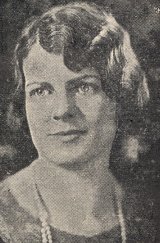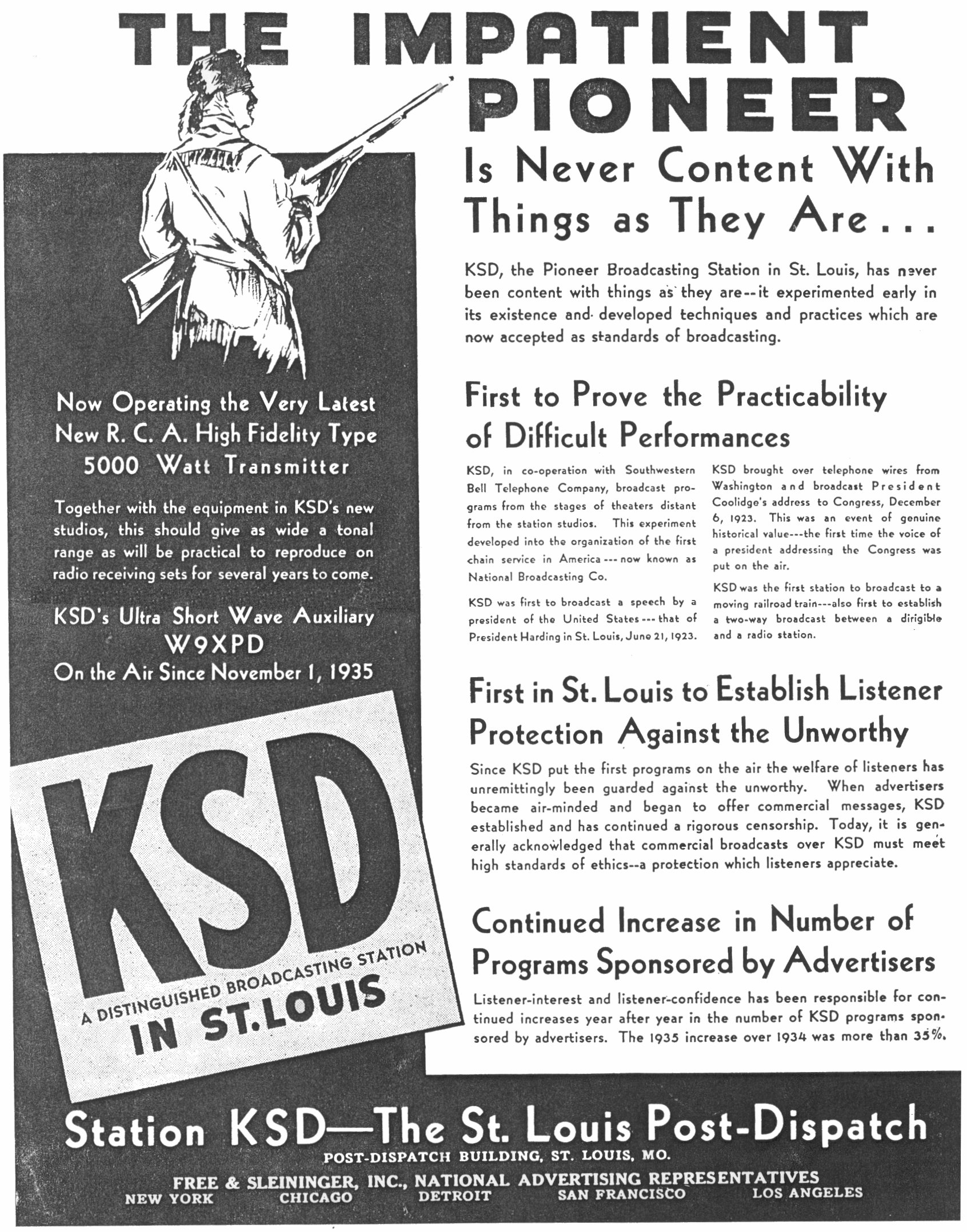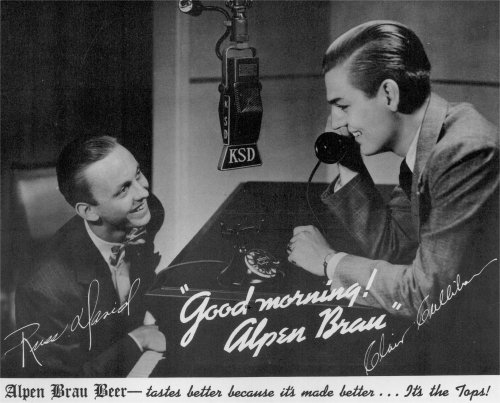Radio Articles
KSD, St. Louis’ Pioneer Station, Reclaims Position Once Held Here

(No Byline) KSD, one of the oldest stations in the United States, after ten years of serving only as an outlet for the National Broadcasting Company, is making great strides in becoming a local station originating programs of its own.
With William H. West, as General Manager, it has undergone a complete reorganization and it originates from seven to ten features a day in addition to the fine chain programs that come through there. KSD is one of the pioneer stations in both popularity and existence and is reclaiming the position that it formerly owned. It was through KSD that a president of the United States spoke for the first time. When President Harding was here in 1923 he spoke on June 21 from the Coliseum on the subject of the “World Court.”
Operating with a minimum of overhead the station is seeking to build up its entertainment features to the highest degree and that it is succeeding is evidenced by the type of programs that are coming from there and have been for the past several months.
Gay Lee, former Director of the Farm Service Hour of KMOX is heard regularly at 11 a.m. over KSD. The Holman Sisters, a piano duo, Francis Jones, violinist, and Elmer Schwartzbeck are also regularly heard on their programs. The program department is headed by Richard Pavey from WLW as Program Director, and he is supported in program work by Chuck Bolte, Alice Vogel, Hilda Gottschak, Don Hunt and Allen Taylor.
W.F. Ludgate, who has been at the station since its beginning is head of the engineering department and is assisted by Robert Coe and C.R. Yarger. There are four salesmen in the new set-up who are Edward W. Hamlin, M.D. Corbett, Frank H. Niehaus, Jr., and Walter E. Wieler.
The announcers heard are Richard Pavey, Allan Taylor, Robert Coe and Chuck Bolte.
Sponsors of the programs heard over KSD include Pevely Dairy Company, who sponsor the “Stars of Tomorrow” broadcast each Sunday afternoon wherein child talent is discovered and given a chance to appear over the air; Minit-Rub, Standard-Tilton Milling Company; Benjamin Moore Paint Company and the Missouri-Pacific Railroad Lines which bring baseball scores to KSD listeners three times a day.
Mr. West, a former Director of Operations at KMOX, is one of the real veterans of radio at the age of twenty-nine. As long ago as 1922 when radio was in its infancy, he installed and operated a radio station at Springfield. Later he came here with the Colin B. Kennedy Radio Corporation and was influential in installing the 50,000 watt station of KMOX, one of the largest in the world.
(Originally published in Radio & Entertainment 4/29/33)

